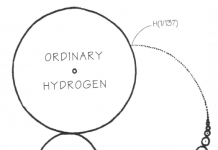Last week, I mentioned that I had attended a conference focused on opportunities in the biomass and bioenergy sectors. One of the article ideas I got from this conference was on the emerging market for wood pellets (tightly packed sawdust and other wood shavings) for heat and electricity. How interesting that, over the weekend, the magazine Science published an article suggesting that the US should ramp up its use of wood for small-scale heat and electricity production (the article is not available free of charge but you can find a summary here).

The Wood (Pellet) Advantage
It must be stated from the get-go that wood harvested at sustainable levels will never account for a significant percentage (i.e. >20%) of total energy consumption. The Science article states that total US energy consumption currently stands at around 100 quads annually, and that wood-based energy makes up about 2% of this. At sustainable harvest levels, the authors estimate that wood could represent about 5 quads, or roughly the amount of energy contained in the Strategic Petroleum Reserve. That number is for all wood-based energy and not only pellets, so the potential market for the latter is even smaller.
That said, wood pellets are rapidly gaining acceptance as a readily-available, carbon-neutral fuel source that can be used on its own or co-fired in coal plants. The global trade in wood pellets is not especially extensive just yet, so pricing data can be a little difficult to obtain. Various sources I looked at seem to put the price range at between $150-200/ton. The International Energy Agency conducted a detailed study of the global marketplace for wood pellets in 2007, and reported that pellets cost in the neighbourhood of $11.50/million BTU. It is therefore no surprise that with residential fuel oil and, increasingly, nat gas prices pushing above that level in 2007 and 2008, wood pellets bbecame a popular option in the colder US Northeast and Northwest.
Environmentally, wood pellets are considered greenhouse-gas neutral as wood is existing biomass (i.e. not ancient biomass trapped beneath miles of Earth’s crust) and it is assumed that forest re-growth will, in time, sequester the carbon dioxide emitted through photosynthesis.
With regards to conventional air pollutants, SOx emissions are reduced almost on a 1-to-1 basis when pellets are co-fired with coal (i.e. a 20% pellet/80% coal mix will reduce SOx emissions by 20%). The relationship between wood and NOx is apparently not as straight forward and I didn’t find a good source on this.
The Science article claims that advanced wood combustion technologies can reach thermal efficiencies of around 90%, which compares very favorably with other fossil-fired technologies.
The Wood Pellet Trade
At the end of 2006, pellet demand in the US stood at around 1.4 million tons, a >200% jump on 2002. Pellets in the US are used mostly in residential and small-scale applications and very little if at all in large-scale power generation. Although pellet popularity is growing, the US market remains comparatively small.
The real story volume-wise has been occurring in Europe, where renewable power generation and greenhouse-has emissions regulations have triggered a boom in wood pellet use. Current EU commitments call for 20% of final energy consumption to come from renewables by 2020 and the meeting of the Kyoto Protocol’s targets. It is estimated that the EU currently supplies about 4% of its total electricity from wood waste (vs. 2% in the US) and this number is expected to double by 2010. Current consumption is now greater than 6 million tons annually.
In 2006, EU nations consumed around 5.5 million tons of pellets, but produced only 4.5 millions, an 18% ‘deficit’. Canada is currently the largest pellet exporter to the EU but there is also significant export potential in the US, as evidenced by the fact that pellet manufacturing capacity has been expanding rapidly.
In the US, the low price of coal and its prominence in power generation (coal accounted for roughly 48% of electricity generated in the US in 2008) present the biggest challenges to the growth of the wood pellets market. However, upcoming greenhouse gas regulations could change this. Because wood pellets are considered greenhouse gas neutral, co-firing them with coal reduces CO2 emissions on a 1-to-1 basis.
This has been one of the major drivers in Europe, and can represent a comparatively cheap way of transitioning toward cleaner power generation technologies. Given the relative abundance of biomass across North America (don’t forget Canada, the biomass superstore to the North), federal greenhouse gas caps could jump start the wood pellets market here.
Wood Pellets Stocks
This is admittedly a sector I knew very little about, so ramping up my industry knowledge alone took a bit of time. When I started my search for stocks on this, nothing evident jumped at me. I therefore thought I would break this article into two, with the next part dedicated only to company analyses. I will publish it next week. In the meantime, if you know of stocks related to this, please let me know.









There’s are few problems with wood pellet stoves that investors might want to know.
1) they require serious amounts of cleaning and maintenance.
2) many (most?) of them require electricity to run, so if the power goes out, while it’ll still burn, it won’t operate effectively. Of course, that’s true of a furnace too.
3) they are not cheap. When I priced them in New England two winters ago, they were well over $1,000 not counting installation.
Thanks Bob. On the cost side, did you calculate total cost effectiveness including fuel costs vs. residential fuel oil or natural gas? I’m curious what the all-in economics are like for residential users.
The pellet industry seems loaded with potential, especially when you add other alternative energy source like wind with the pellet industry. To generate eletricity.
L-Nrg
I live at 9,000 feet elevation, in the mountains west of Denver. While my home has a natural-gas forced-air heating system, I also have a Harman P68 (68,000 BTU) pellet stove. By burning pellets (even at $260 a ton) I save about $200 a month over the cost of heating my home with natural gas. My heating season is mid September through early June, so I save $1,500 to $1,800 per year by burning pellets.
High maintenance??? Yes, I have to fill the hopper every morning, and empty the ash-can about once a month. Is that worth $200 a month? I think so.
The pellet stove draws less electricity than my gas furnace, and I’m currently building a backup power system for it, designing for 24 hours of operation on battery backup.